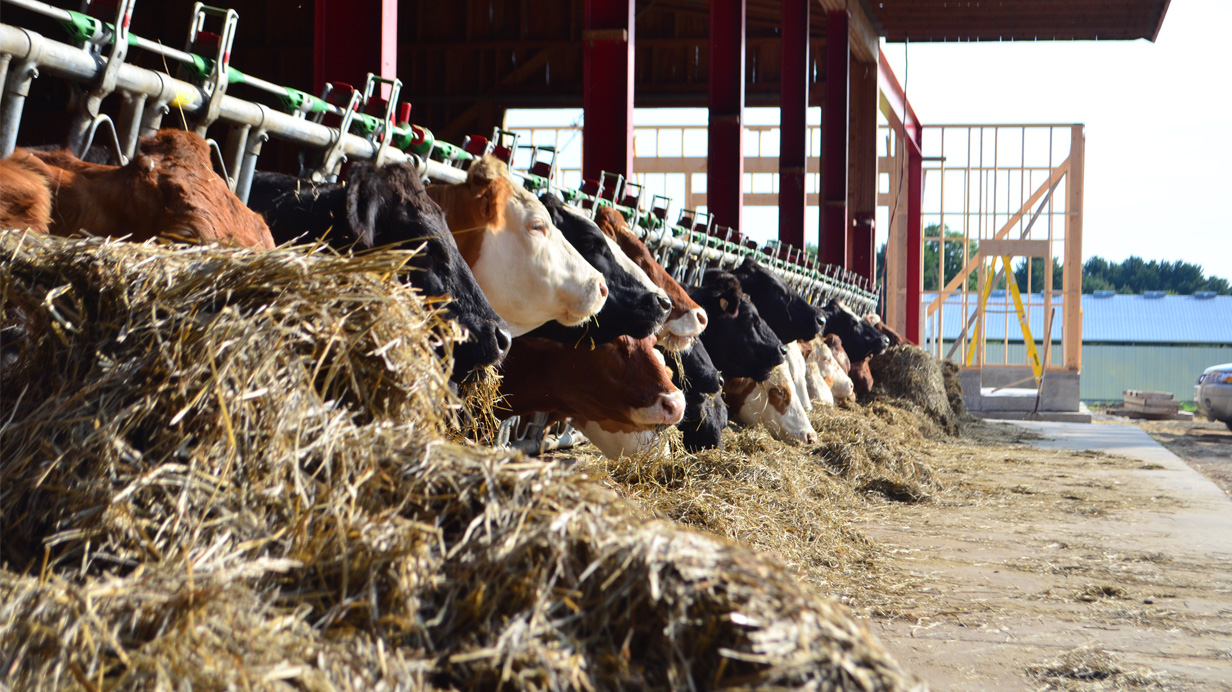What to do in case of a forage shortage
The price of feed follows the principle of supply and demand. When there is a shortage of supply, the best way to avoid rising prices is to reduce demand.
Here are some strategies for reducing the cost of hay when demand is too high.
1. Identify cull cows
Separate the cows that calved from those that did not. Leave a bull with the second group of cows for up to 45 days. Then, use pregnancy tests to identify non-pregnant cows and remove them from the herd.
Since a non-pregnant cow will consume 10 to 12 kg of dry matter per day for 280 days, this will save 3 to 3.5 tons of hay.
2. Remove cows from pasture to allow plants to regrow
Bale grazing has many benefits. As well as reducing the risk of pasture damage in the fall, it also:
- Ensures calf gain
- Prevents cows from losing too much weight during the breeding season
- Spreads manure and urine evenly
To practise bale grazing, simply take your cows off the pasture for three weeks and place round bales every 25 feet (see diagram below).
Use a ratio of approximately one round bale for every 10 cows. When the cows have consumed all the bales, replace them with new ones further away. Do not use circular feeder. After three weeks, the cows can be returned to the pasture.
Bale grazing diagram:

3. Creep feed your calves
Set up creep feeders in an area where only calves can enter and feed them as much as they like of Deroboeuf, a mixture of PSP PC with grain (half and half with grain), or OptiBoeuf 34 with grain (¾ grain and ¼ OptiBoeuf).
If you have 15 calves, that’s 15 kg of dry matter per day. If you let your calves graze, they will eat as much as cows.
4. Wean your calves early
Feeding calves is cheaper than feeding cows to feed the calves.
Dry cows eat less than milking cows and can get by on forage with about 11% crude protein. In addition, the average daily gain of unweaned calves drops during periods of feed restriction.
5. Feed cows differently
In some cases, it may be worth using other ingredients such as cereal silage, grain, or supplements.
For example, you could feed your cows twice a day:
- 2.5 to 3 kg of feed each time;
- A mixture of 80% whole corn and 20% OptiBoeuf 51 each time.
Another trick is to use Bovatec (lasalocid sodium), a medicated feed additive that can be added to mineral or feed. Bovatec alters the rumen bacteria that most efficiently digest fibre, improving feed efficiency by 3% to 8%, depending on the animal and type of feed.


